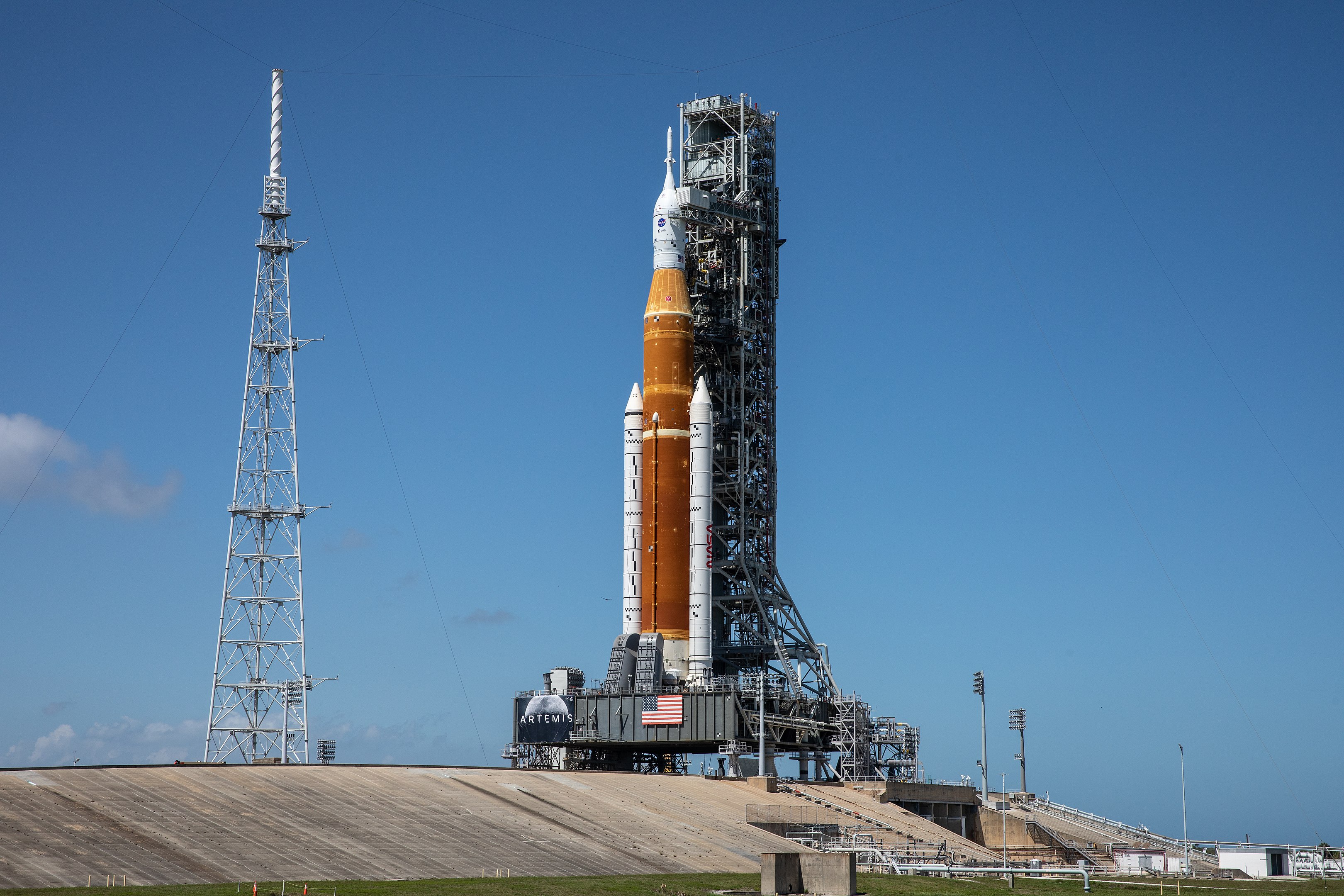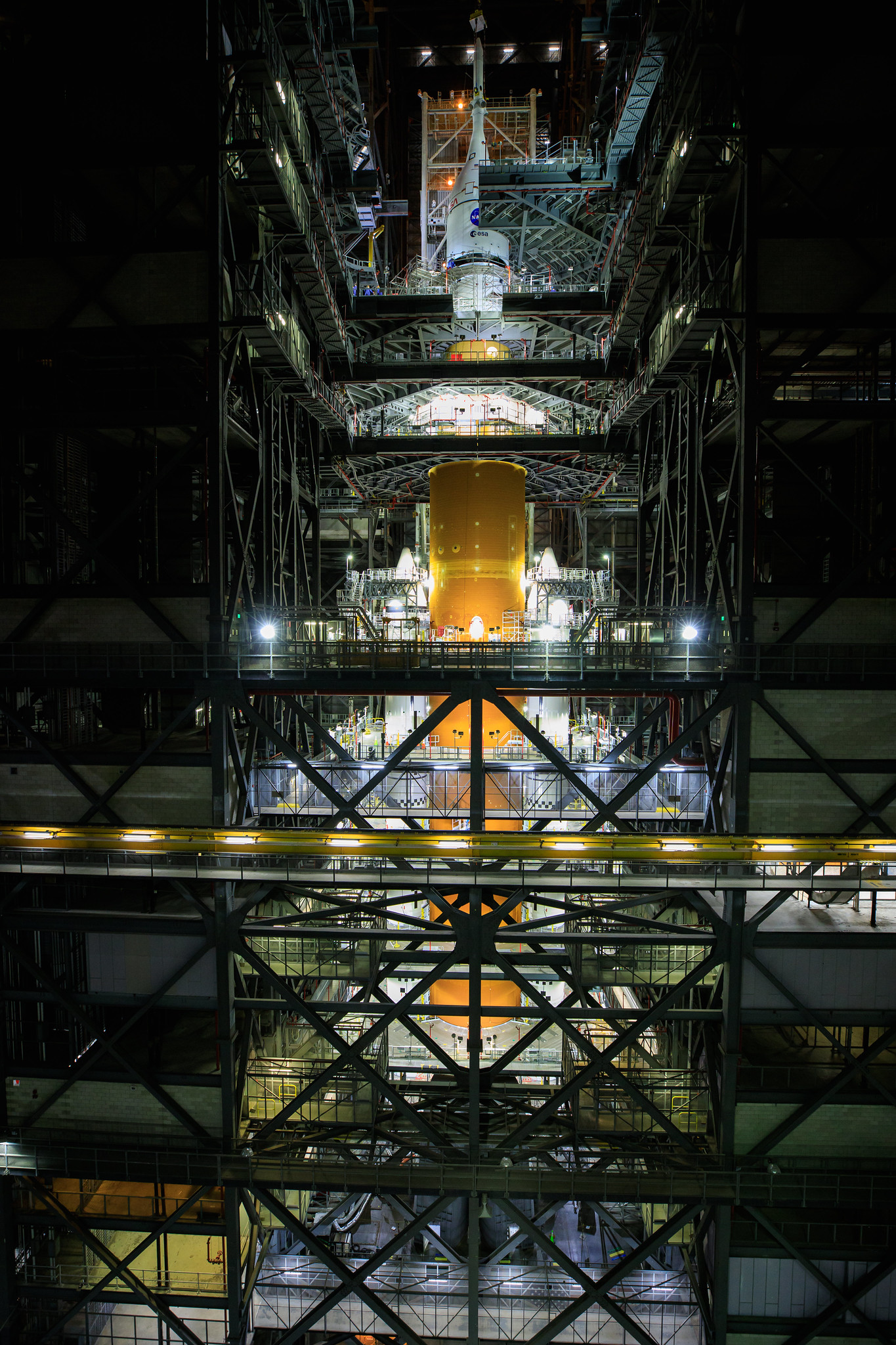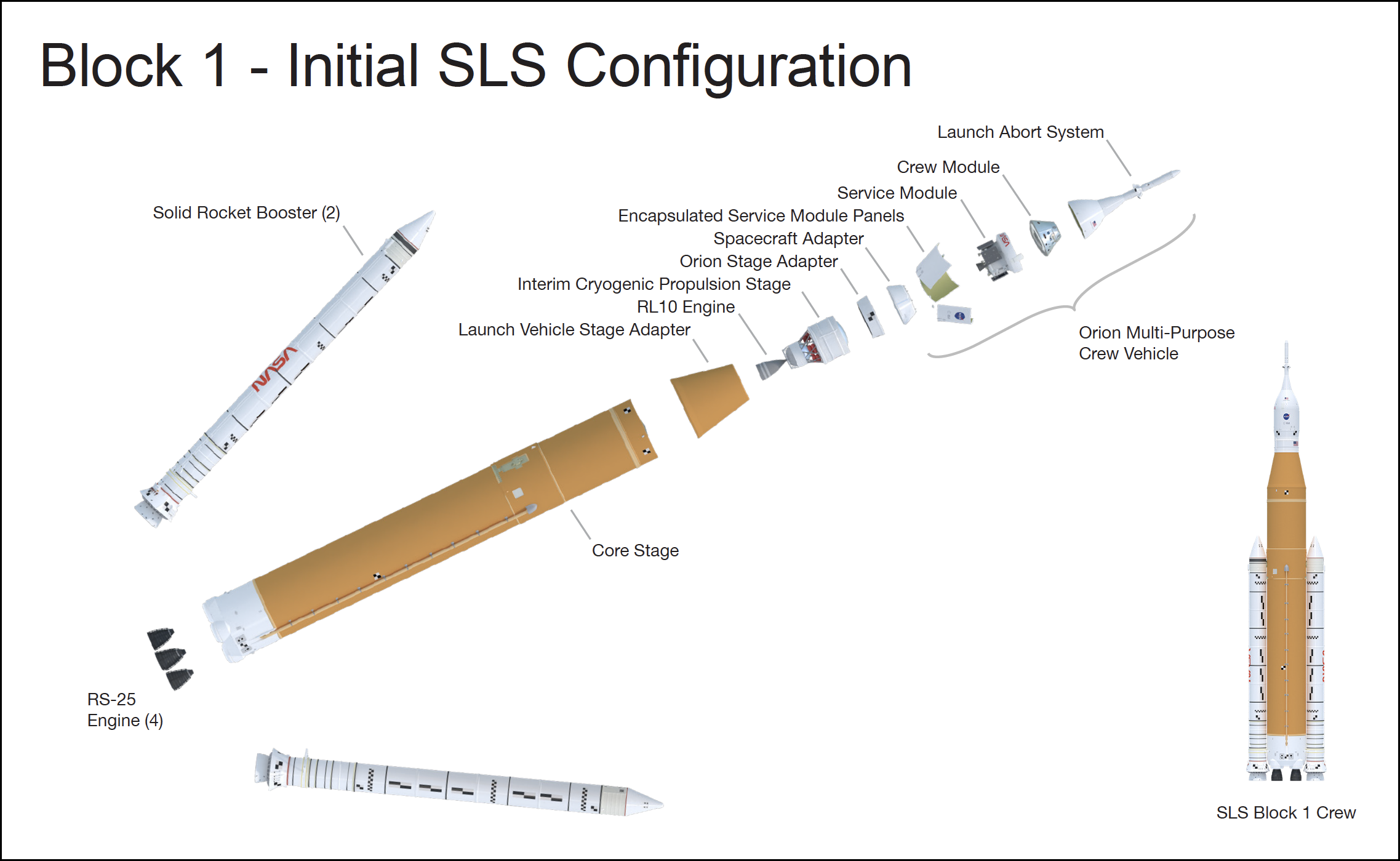August 2022 is set to be an important month for the future of space exploration as it will see the first launch of the massive Space Launch System (SLS), the most powerful rocket ever built by humanity. The rocket will carry the uncrewed Orion spacecraft into space as part of the Artemis I mission.
“The next era of space exploration begins with the Artemis I launch,” SLS Associate program manager, Sharon Cobb, told Space.com. “Artemis will enable the first woman and first person of color to not only set foot on the moon but also to explore it along with international and commercial partners.”
This launch will ensure both the Orion capsule and the SLS are ready to carry astronauts during the Artemis II mission set for no earlier than 2024. “Artemis will also test new deep space exploration systems including the SLS rocket needed for long-term exploration of the moon and ultimately Mars,” Cobb added.
The SLS launch is set for no earlier than Aug. 29, but it’s been a long journey to the launchpad for the SLS.
Related: NASA’s massive moon rocket will roll out earlier than planned
The SLS is a super-heavy-lift vehicle and NASA’s first exploration class rocket for human-space travel since the Saturn V — the most powerful rocket to serve NASA before the SLS. The Saturn V was also to the Apollo missions what the SLS will be to Artemis and, like the SLS, was built to be upgraded and improved.
The SLS, however, takes the concept of evolution to a whole new level.
The initial planning for a rocket to replace the Saturn V began with a series of in-house and external studies, including 1986’s Space Transportation Architecture Study, and the 2005 Exploration Systems Architecture Study. This resulted in NASA refocusing on the idea of returning humans to deep space.
Realizing a super-heavy lift capability would be needed to make such missions a reality, NASA was left with thousands of potential capabilities and features to be brought together in the rocket’s design.
The attributes this rocket would need were clarified when the goals of the SLS were laid out in 2010. These included being able to lift 143 tones (130 tonnes) of payload into a low-Earth orbit, and being fully operational by Dec. 31, 2016. The project would go on to suffer numerous delays that pushed its first launch back to 2022.
In 2011, a NASA presentation estimated a conservative development cost of $18 billion USD through 2017, with the SLS itself slated to cost $10 billion, the Orion craft $6, and launch upgrades to Kennedy Space Center estimated at $2 billion.
NASA reduced mission complexity for the SLS design by taking advantage of resources established for the space shuttle, including the workforce, manufacturing processes, launch infrastructure, and even the liquid oxygen/liquid hydrogen propellants that will power the SLS.
The SLS would also use ‘heritage’ boosters and shuttle engines, albeit with significant upgrades. Its development would ultimately involve as many as 1,100 companies from across the U.S. taking advantage of a well-spring of space development experience.
“The SLS is built with the benefit of everything NASA and our industry partners have learned about building rockets and spacecraft to survive extreme environments,” Cobb said. “It uses modern manufacturing techniques and updated elements, such as the RS-25 engines and solid rocket boosters that demonstrated extreme reliability on numerous shuttle missions.”
Cobb adds that the SLS combines these new techniques with new advanced flight computers and electrical systems.

The Boeing company took the lead in the construction of the first version of the SLS, or ‘Block 1’ as it is officially titled, with the building of the Core Stage hardware — a stretched shuttle external fuel tank powered by four space shuttle (RS-25) main engines — in November 2014 at the Michoud Assembly Facility in New Orleans, Louisiana.
Cobb said that this 212-foot tall core stage comprises the backbone of the SLS.
The core stage holds 730,000 gallons (3.3 million liters) of super-cooled liquid hydrogen and liquid oxygen for its four RS-25 engines which should be able to provide 8.8 million pounds (3.9 million kilograms) of maximum thrust at lift-off, 15 percent more thrust than Saturn V. These were attached to the core stage in 2019 after being tested by NASA between 2015 and 2017.
The SLS core stage was moved to Stennis Space Center in early 2020 to undergo end-to-end testing. This included firing tests that took place in January and March 2021, with all four engines igniting and throttling down in a simulation of in-flight conditions during the later test.
The core stage was moved again in April 2021, this time to Kennedy Space Center where it was coupled with the upper stage that it will use during Artemis 1.
Related: NASA fires up its 1st SLS megarocket for moon flights in a critical engine test

This includes the Interim Cryogenic Propulsion Stage (ICPS), which features a pair of five-segment space shuttle solid rocket boosters that will push Orion away from Earth’s orbit. This final push will happen when the SLS is traveling at 17,500 miles per hour (28,163 km/h) while 100 miles (161 kilometers) above the planet.
The stacking assembly of the SLS was completed in June 2021 with the placement of the Orion capsule being one of the final steps.
The SLS, now standing at 322 feet (98 meters) — taller than the Statue of Liberty but still smaller than the Saturn V — and weighing 5.75 million pounds (2.6 million kg) was rolled out to the launch pad LC39B on Mar. 17, 2022. This leaves the rocket ready for launch on Aug. 29, 2022, with backup launches set for Sept. 2 and 5.
For the teams behind the construction of the SLS, there is no time to sit back and enjoy the fruits of their hard work. Though the SLS will be the most powerful rocket in history when it blasts off at the end of August 2022, this isn’t the end of the story. The SLS will continue to evolve into an even more powerful piece of equipment, set to shape the future of space exploration.
As the Artemis 1 mission prepares to launch, NASA engineers and collaborators are hard at work devising and building the equipment for future Artemis missions. This will involve major upgrades to the SLS.
Though the Core Stage of the SLS with its four RS-25 engines will carry through the Artemis program, the rocket will evolve to increasingly more powerful configurations needed to carry the crew of the Orion craft 1,000 times further than the International Space Station (ISS) and to speeds of 24,500 mph (39,428 km/h) needed to reach the moon.
The twin five-segment solid rocket boosters and four RS-25 liquid propellant engines of Block 1 will be able to lift 59,500 pounds (27,000 kg) to orbits beyond the moon. The upper stage’s ICPS then sends Orion off to the moon.

This configuration will be in place for at least the first three Artemis missions. It will then be succeeded by Block 1B. This will see the introduction of a more powerful upper stage, the Exploration Upper Stage (EUS) with four RL10C-3 engines that produce almost four times more thrust than the one RL10B-2 engine that powers the ICPS.
Block 1B should be able to send 83,700 pounds (38,000 kg) into deep space, including Orion and its crew. In cargo-only missions, it should be able to send much larger cargo payloads to the moon or even to Mars.
The next SLS configuration after this, Block 2, will be able to provide 9.5 million pounds (4.3 million kg) of thrust at launch and should be capable of lifting 101,400 pounds (46,000 kg) into deep space.
“As it evolves, it also will have the capability to send both astronauts and large cargos, such as habitats, to the moon on a single mission,” Cobb said. “With unrivaled lift and payload capacity, SLS provides a unique capability to loft key components of a reusable lunar architecture to foster the growth of a long-term lunar economic ecosystem.”
NASA is currently working on configurations of the SLS that will be able to lift between 100 tons and 130 tons (90 to 118 tonnes) of cargo to deep space, with the eventual goal of fulfilling the target laid out eleven years ago.
“The rocket on the pad represents a journey taken not by one person but by a team of brilliant people working together,” Cobb concluded. “It is truly amazing to think about what this capability to travel to many deep space destinations will mean to the future of human exploration.
“It is a great example of what incredible feats we can accomplish when we work together.”
Additional Reading
Before the SLS, the most powerful rocket devised by humanity was the Saturn V.
One of the key missions for Saturn V moon rocket was delivering astronauts to the moon as part of the Apollo missions.
Read more about the Artemis missions that will see humans once again step foot on the lunar surface with our Artemis program live updates.
Bibliography
“Artemis (opens in new tab).” NASA (2022).
“NASA’s Space Launch System, Reference Guide.” NASA (2022).
“Rescheduled: keeping our sights on Mars part 3: A status update and review of NASA’s Artemis initiative (opens in new tab).” U.S. House of Representatives Committee on Science, Space and Technology (2022).
Follow us on Twitter @Spacedotcom (opens in new tab) or on Facebook (opens in new tab).

